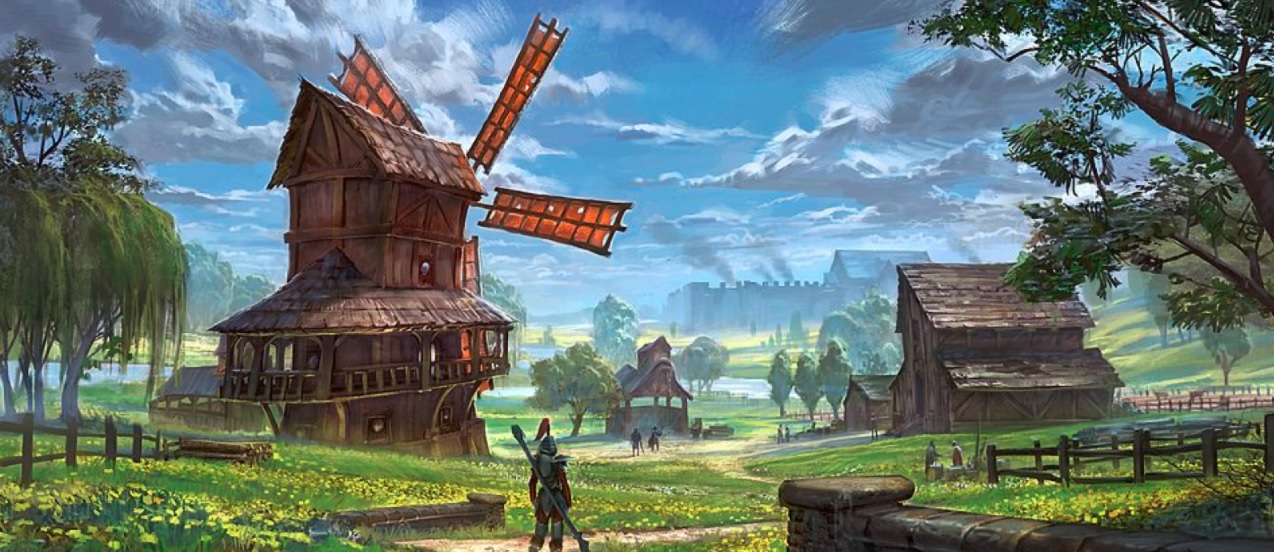Rural (range)
Rural describes those civilized inhabited spaces recognized as "countryside," with planted fields, grazed meadows, parkland and hinterland forests used as a source for timber and forage. The arrangement of the countryside — how close the farms are to one another, or the size of farm, will depend upon fertility of the soil and the ownership of the land. The very best land, with enormous spreading fields, associated church lands, a village and many roads, is usually controlled by a manor houses — the owner of which may or may not be present. Scattered lands, richly soiled may have been settled by independent freeholders in scattered stone cottages, comprised as a large tribe. On large estates where much of the land hasn't been cultivated, there may be cotters who have taken advantage of an absent lord or a family that gives little attention to their property. Sometimes, cotters are tolerated. A squire or noble will most often, however, have control over many serfs: families tied to the land by debt or contract, who work on the lord's land in exchange for enough to survive. Often, the manner of the peasants, their homes, the organization of the fields and such will tell an outside which sort of rural landscape it is.
The movement of outsiders will be noticed, if not directly confronted. Usually, so long as outsiders travel on available roads — built for transport and communication — and do not tarry in their journeys, they will remain unmolested. However, with fruits growing on trees, domestic animals passively grazing on hillsides and a certain fearfulness of strangers, those who might seek to rest or camp too close to private lands without making inquiry or explanation, may be accused of loitering, trouble-making or even banditry. A patrol may show up in the middle of the night to push the interlopers on; or a group of distrustful peasants may do so. However, a generous, forthright party, who takes the time to explain what they're doing there, will often be granted leave to sleep in a nearby copse of trees, so long as they continue on their way in the morning.
Rural areas occur in ranges from the subtropics to the sub-arctic, wherever traditional fields can be plowed and planted. Commonly, however, they describe traditional temperate farmlands, wherever the land is arable and plenty of water exists. Most rural areas surround a town or a city, whose political authorities oversee these ranges as a whole. In large parts of the world, one rural landscape flows steadily into the next, for hundreds of miles in every direction.
Conditions
The look and feel of the land depends on the season. In winter, all is drab and lifeless; hardly anything moves, and on cold days even the animals are given shelter in barns. Come the spring, everything melts. The air is fresh, the trees begin to show buds on their branches ... yet the roads are muddy and covered with bogs, challenging the movement of larger vehicles on back roads especially. Newly born animals attend their parents. With summer, the leaves are in full and in most temperate and sub-tropical lands, the air is thick with humidity, for the plants exude what they do not use; it is often uncomfortably hot, while the roads are dusty. The smell of flowers is richly intoxicating. The runoff waters are high until June, falling off to very little as fall approaches. With the fall, there is activity everywhere: in the fields, as the crops are harvested, and on the roads, where laden wagons and carts run all day. The air is thick with haze, until harsh winds blow and winter steadily asserts itself again.
